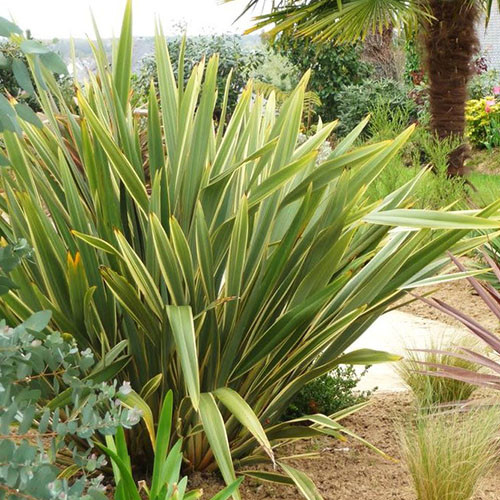265cos_Phormium follows function: a NZ flax in Peckham

 PHORMIUM TENAX VARIEGATA
PHORMIUM TENAX VARIEGATA

265cos_The architecture of the White Picket Fence.





265cos_Brick walls, slate roof

 The materialisation of our Costa Street project in Peckham is merely a contemporary interpretation of the traditional two-storey semi-detached house. Formally this was a central entry, with framed windows and a pitched roof; materially, brick walls and a slate roof.
The materialisation of our Costa Street project in Peckham is merely a contemporary interpretation of the traditional two-storey semi-detached house. Formally this was a central entry, with framed windows and a pitched roof; materially, brick walls and a slate roof.
265cos_ slate v brick
 Slate (roofs) and brick (walls) are ubiquitous building materials in London and thus can readily facilitate planning consents through ‘normalcy’. On the other hand the architect in her quest for innovation is always asking: how can I contribute something new to the dialogue between brick and slate? She did a quick mock
Slate (roofs) and brick (walls) are ubiquitous building materials in London and thus can readily facilitate planning consents through ‘normalcy’. On the other hand the architect in her quest for innovation is always asking: how can I contribute something new to the dialogue between brick and slate? She did a quick mock -up… TBC
-up… TBC
265cos_Bob Parkin talks firefighting
How are fires fought in high-rise blocks?
The deadly blaze at the 24-storey Grenfell tower block in west London has shocked the UK. Fire services around the world have to deal with blazes in high-rise blocks, so what lessons have been learned?
Firefighters arriving at the scene of a high-rise fire would normally set up a base about two floors below the actual fire, says Bob Parkin, an ex-firefighter turned safety consultant. This allows them to set up entry control points, so firefighters going to fight the blaze can be recorded, and crucially, have their breathing apparatus checked so it’s clear how much time they can spend in a dangerous, smoke-filled area. The amount of time each person can spend fighting the fire is limited by the amount of air available – so any minutes spent climbing up into a building with equipment is precious fire-fighting time wasted. “You’re going to use a considerable amount of air going up the 10 floors, so because of that and various other things, they will set up the control point two floors below the fire,” Mr Parkin says. Once they are able to go in, the immediate focus, if people are reported to be trapped in the building, would be on rescuing them, rather than firefighting, and the firefighters would carry minimum levels of equipment for that reason, he adds. “They will have to fight their way in, in some instances, but they will take chances when people’s lives are at risk, without a doubt.”
But the situation faced at Grenfell Tower in London would have been extremely difficult, Mr Parkin says, because the fire was able to spread so rapidly, and appeared to engulf nearly the entire building. Having to get 20 storeys up to rescue people in that situation “is just unbelievable”, he says. Without extra air supply for the person rescued, the journey back out of the building would be extremely dangerous.The fire brigade would also have had to operate from a very low level in the building because of how far the blaze had spread, and there were concerns that the building might collapse. https://www.bbc.co.uk/news/uk-england-london-40273714 We now asked Bob to look at a small block of flats made from CLT. Surprisingly CLT solid wood elements are more fire-resistant than is generally assumed. CLT panels have a moisture content of approx. 12%. and so if CLT is exposed to fire, and thus to an elevated supply of energy, its temperature rises and the water molecules embedded within start to evaporate at approx. 100 °C. At temperatures above 200-300 °C, these chemical compounds decompose in a process known as “pyrolysis” (whereby gas emissions from combustible components in the wood burst into flame), gradually spreading along the wood, leaving a charring area behind it. This char layer is formed from the carbonaceous residue of pyrolysis, which burns, generating embers. This layer’s properties — in particular, low density and high permeability — act as heat insulation and protect the underlying, undamaged wood. This results in a carbonised surface which protects the internal CLT layers which have not yet been exposed to fire and although in a fire, solid wood constructions become charred on the surface, the process of pyrolysis and the behaviour of wood can actually be predicted (unlike steel or concrete constructions). Through the properties of pyrolysis and the ability to form a char layer, the building material, wood, has inherited its fire resistance from nature itself. By contrast, steel constructions, for example, require additional fire protection measures. The environmentally-friendly building material offers unique features when exposed to fire, which means that CLT elements have a high level of fire resistance.
265cos_TOOL OF THE MONTH: FREUND MASTERCUT SLATE CUTTER
 Who would have thought cutting slate could be so easy? I start to think a whole generation of architecture students at NCKU Taiwan making slate models. Marvin will make a slate model of our Costa St project, by way of example.
Who would have thought cutting slate could be so easy? I start to think a whole generation of architecture students at NCKU Taiwan making slate models. Marvin will make a slate model of our Costa St project, by way of example. 
Tramezzino: a triangulated sandwich panel?


265cos_WHAT’S THE SECRET ABOUT SECRET FIXINGS?






